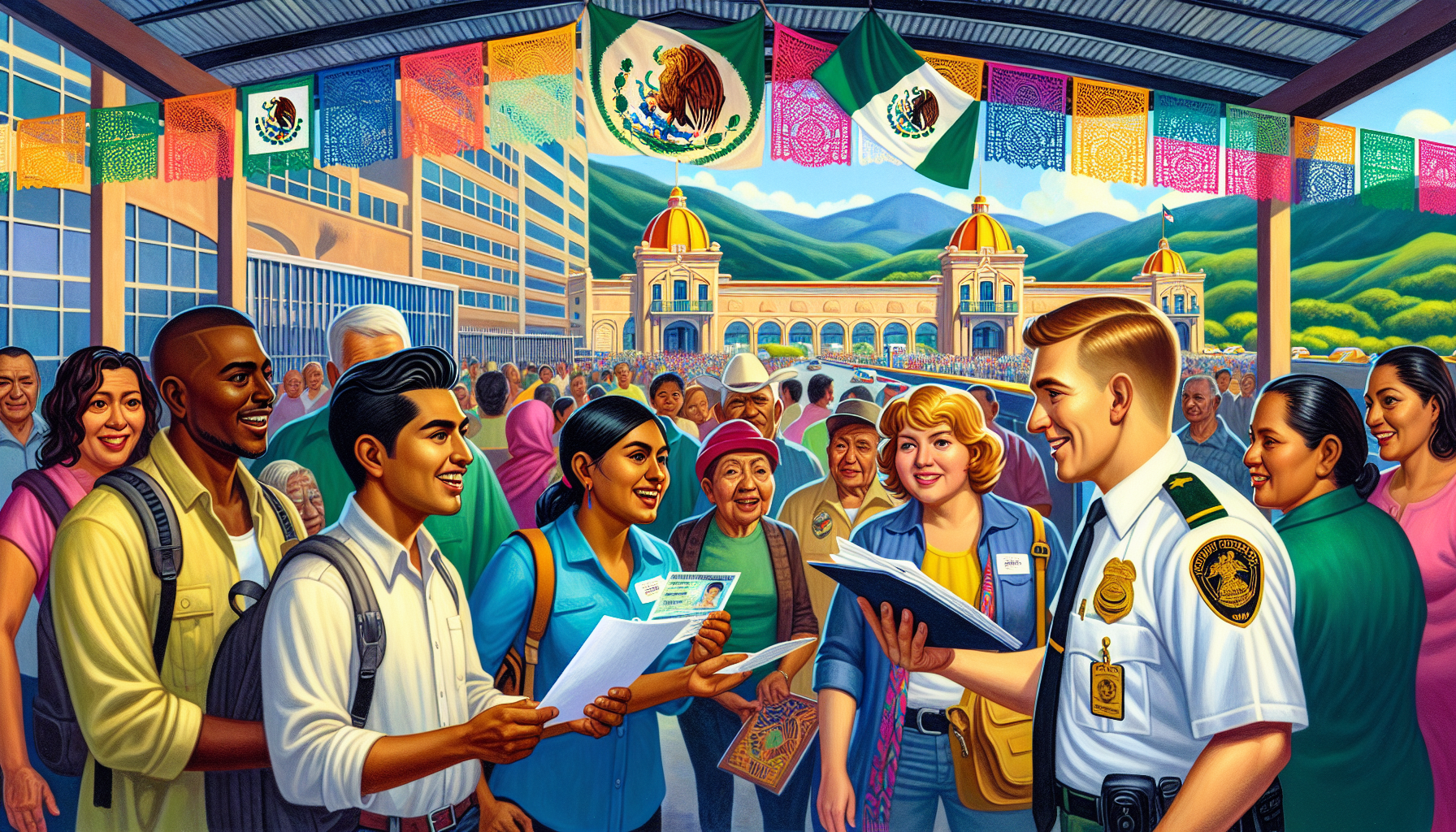2024 Relocation Guide (part 2) : Mexico Residency for Expats

Top Guide to Mexico Residency Requirements
Are you considering making Mexico your new home, but feel overwhelmed by the complexity of the immigration process? You're not alone. The path to Mexican residency can be labyrinthine, with various options and requirements that often change. This blog post is your guide to understanding the process and why enlisting a specialist can make all the difference.
If you're looking for a guide to help you navigate this process, reach out to the relocation experts at Mycasa Real Estate. Check the relocation guide on Mycasa.mx frequently for topics relevant to the relocation process.
Need help planning your retirement in Mexico? Check out this post for a comprehensive guide.
Table of Contents
- Mexico Residency Visa Types
- Temporary Residency Requirements
- Renewing Temporary Residency
- Benefits of Holding a Temporary Resident Card
- Common Mistakes to Avoid
- Hiring an Immigration Attorney
- Other Articles About Relocating And the Cost of Living in Mexico
- Frequently Asked Questions
Mexican Residency Visa Types:
Mexico offers two main types of residency visas:
-
Temporary Resident Visa: Valid for up to four years, with eligibility through employment, study, or family connections.
-
Permanent Resident Visa: No renewal required, ideal for retirees or those who meet specific criteria.

Temporary Residency Requirements
Temporary residency is ideal for individuals planning to stay in Mexico for more than 180 days but less than four years. It provides a pathway to permanent residency after four consecutive years.
Steps to Obtain a Temporary Resident Visa:
-
Apply at a Mexican consulate in your home country.
-
Prove financial solvency (see next section for details).
-
Present personal documents, including a clean criminal record.
-
Once in Mexico, convert your visa into a Temporary Resident Card within 30 days.
Temporary Vs Permanent Residency: Key Difference
-
Renewal Requirements:
- Temporary residency requires periodic renewal (up to four years total).
- Permanent residency does not require renewal.
-
Path to Permanent Residency:
- After four years of holding temporary residency, you can apply for permanent residency without proving financial solvency again.
- Ideal for those seeking long-term stability without immediate commitment.
-
Who Benefits from Temporary Residency?
- Those wanting to experience life in Mexico before deciding on permanent residency.
- Families maintaining legal status and access to healthcare.
- Individuals looking for employment or business opportunities in Mexico.
-
Renewal Process:
- Initial permit is valid for one year.
- Renewals available for up to three additional years.
- Must renew 30 days before expiration to avoid penalties.
Check this link for documentation requirements.
Financial Solvency for Residency
To qualify for a Temporary Resident Visa, applicants must demonstrate financial stability through one of the following:
-
Monthly income: Minimum of $4,394 USD for six months.
-
Savings: At least $73,235 USD in bank statements.
-
Property ownership: Owning real estate valued at $345,740 USD.
Tip: Requirements vary by consulate. Always check the latest criteria at your nearest Mexican consulate.
Alternative Routes to Residency
Not everyone qualifies through financial means. Consider these alternative options:
-
Family Ties: Spouses, parents, or children of Mexican citizens may qualify.
-
Investor Visas: Business owners and investors meeting specific capital thresholds.
-
Retirement Visas: For those with sufficient pensions or passive income.
-
Regularization through RNE: An option for those already in Mexico who meet visitation criteria.

Step-by-Step Application Process
-
Schedule an appointment at a Mexican consulate.
-
Gather required documents, including proof of income and personal identification.
-
Attend an interview where consulate officials assess your eligibility.
-
Receive approval and a visa stamp in your passport.
-
Enter Mexico and register at an immigration office within 30 days.
Converting Your Visa to a Temporary Resident Card
Upon arrival in Mexico, follow these steps:
-
Visit the local immigration office within 30 days.
-
Submit required documents, including your visa and proof of address.
-
Pay the fee and provide biometric data.
-
Receive your Temporary Resident Card, valid for up to one year (renewable).
Renewing Temporary Residency
-
Renewal is required after one year and can be extended up to four years total.
-
Apply 30 days before expiration at a Mexican immigration office.
-
Provide updated financial documents and a renewal request letter.
Warning: Missing the renewal window may result in penalties or loss of status.
Benefits of Holding a Temporary Resident Card
-
Legal employment authorization.
-
Access to Mexico’s national healthcare system.
-
Eligibility for a Mexican driver’s license & bank accounts.
-
Easier transition to permanent residency after four years.

Common Mistakes to Avoid
-
Submitting incomplete or incorrect documents.
-
Assuming residency applications can be processed within Mexico (they must start abroad).
-
Not verifying specific consulate requirements, as they vary.
-
Delaying renewal, risking loss of legal status.
Tip: Always confirm details with an immigration attorney to avoid delays.
Hiring an Immigration Attorney
A qualified immigration attorney can:
-
Ensure compliance with consulate-specific rules.
-
Facilitate appointments & document preparation.
-
Provide bilingual support for interviews and paperwork.
Hiring a specialist can streamline the process and increase approval chances.
The Game-Changer Program – RNE:
A notable option for those who might not meet the usual financial criteria is the RNE program. It offers a unique path to a four-year temporary residency without the standard financial solvency proof, provided you meet certain visitation criteria and are currently in Mexico.

Other Articles About Relocating and the Cost of Living In Mexico
Tired of the US? Your Ultimate Guide to Moving From the U.S. to Mexico
Discover Affordable Beach Bliss: Your Guide to the Cheapest Beachfront Property in Mexico
How to Buy Property in Mexico 2024: Closing Costs, Laws and Tips
Cost of Living In Playa Del Carmen: What to Expect
Cost of Living in Tulum 2024: Budget, Rent and Lifestyle Guide
Mexico Real Estate Prices: Trends in Quintana Roo & Beyond
Frequently Asked Questions
What is the minimum monthly income required for a temporary resident visa in Mexico?
The minimum monthly income required for a temporary resident visa in Mexico is USD $4,350.
How long is the Temporary Resident Card valid for initially?
The Temporary Resident Card is initially valid for one year. It can be renewed for additional years thereafter.
Can I start the residency application process after arriving in Mexico?
You cannot start the residency application process after arriving in Mexico; it must be initiated at a Mexican embassy or consulate outside the country.
What are the benefits of holding a Temporary Resident Card in Mexico?
Holding a Temporary Resident Card in Mexico provides significant benefits, including the legal right to work, access to healthcare services, and the ability to enroll children in public education. These advantages facilitate a smoother transition for individuals and families living in Mexico.
How soon should I start the renewal process for my Temporary Resident Card?
It is advisable to initiate the renewal process for your Temporary Resident Card up to 30 days prior to its expiration date to ensure adequate processing time
About the Author:
Professor Raul Morales is a distinguished figure in the real estate industry, bringing a wealth of expertise and insights to his readers. As the former Vice President of Communications for AMPI (Asociación Mexicana de Profesionales Inmobiliarios), the equivalent of the National Association of Realtors in Mexico, he has been at the forefront of shaping real estate practices in the country. His deep understanding of the industry is further enriched by his role as a Professor of Real Estate Negotiations, where he imparts knowledge in the prestigious AMPI Real Estate Licensing Diploma Certification Course. With a career marked by leadership and educational contributions, Professor Morales is not only an expert in his field but also a guiding force in shaping the future of real estate in Mexico.
Update 2/4/25











Comments (0)